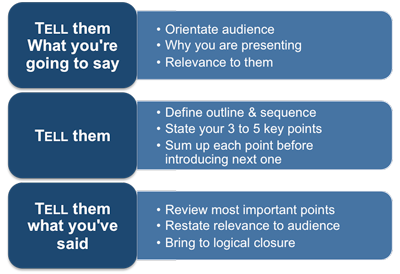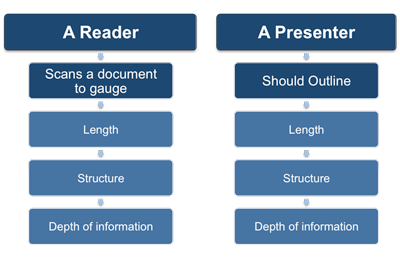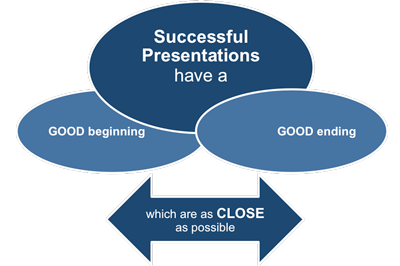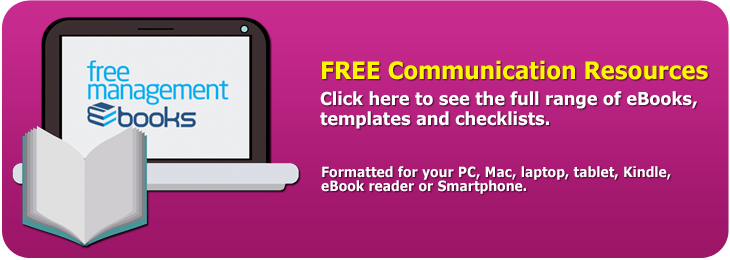Communication Skills - Repetition and Timing
There is an old saying about presentations that you should tell the audience what you're going to tell them, then tell them, and finally tell them what you've told them.
As the great orator Winston Churchill said:
'If you have an important point to make, don't try to be subtle or clever. Use a pile driver.
Hit the point once.
Then come back and hit it again.
Then hit it a third time - a tremendous whack.'
This does not mean repeating the same thing three times. In each of the three ways you tell your audience something, you are meeting three different objectives. The first phase ('tell them what you're going to tell them') needs to serve a very particular purpose and that is to avoid leaving the audience behind at the very beginning of the presentation.
 |
Bearing in mind that the audience is unlikely to remember more than one key message it is essential that you focus your presentation on that message. The way you emphasize the message can be through repetition, illustration, and placement.
The most important place for emphasis is the beginning and the end when the audience is at its most receptive. That is why it is vital to use the beginning of the presentation to define its scope and to impress on the audience what it is you want them to take away from it. Similarly, at the end of the presentation you need to summarize the most important details and provide a conclusion.
It is also necessary to orientate the audience at the beginning of a presentation because they have no opportunity to look up any background information and they can only take on board the information in the order that you give it to them.
This is very different to providing written information because with a written document the reader can either look at the table of contents or simply read through the headings page after page in order to give themselves a clear idea of what exactly the document is about and in what order the topics will be presented. They can also see how long the document is, how long each section is, and approximately what sort of detail it goes into.
This has the effect of mentally preparing them to receive the information in a way that is not possible with a presentation, unless you outline it before going into the substance of the presentation itself.
 |
Do not be tempted to overlook this process because the audience depends entirely on you for this initial orientation phase and if you do not do it well you will make things more difficult for yourself than they need to be. Obviously, you can only provide this information once you have decided on these things, which will be at the end of the preparation stage, but you need to remember to make it a part of your introduction and to allow enough time for it.
The beginning of the presentation should also serve to answer the questions:
- Why are you the person giving the presentation rather than someone else?
- What relevance does the topic of the presentation have to the members of the audience personally?
There is another old saying that states that successful presentations should have a good beginning and a good ending, and that these should be as close together as possible.
 |
Whilst intended to be humorous, this saying does make a valid point, which is that brevity is important. Even experienced public speakers struggle to hold an audience's attention for more than about 40 minutes, and 20 minutes is a realistic maximum for most people who are presenting a work-based topic.
No matter how much supporting information you have, you need to set yourself a strict time limit and discard anything that will take you over it. If you feel that 20 minutes is not long enough then ask yourself how many times you have heard anyone say that they wished a presenter had spoken for longer, or that a presentation was too short.
You need to bear all of the above points in mind when you begin the process of turning your initial plan into a presentation script. If you ignore the need for repetition, audience orientation, and the fact that your time is limited, you will end up with a presentation that lacks impact and is too long.
You may also be interested in:
Preparing a Management Presentation | Your Presentation Aim | The Five-Stage Format | Preparing the Main Body | Key Point Guidelines | Finalizing the Main Body | Preparing Your Pre-Introduction | Preparing the Introduction | Preparing the Summary and Conclusion.



